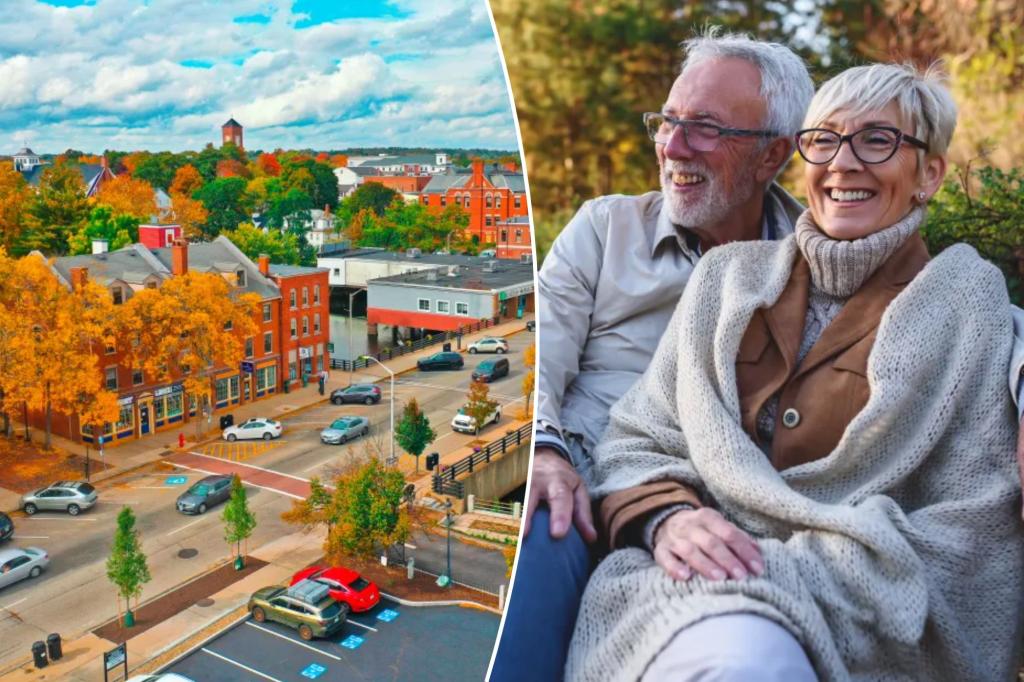A New Chapter by the Sea: Milford, Connecticut Shines as a Retirement Haven
In the quest for the perfect retirement destination, upper-middle-class New Yorkers need not venture far from the familiar skyline of Manhattan. Just 90 minutes away lies Milford, Connecticut, a charming coastal community that has recently earned prestigious recognition as one of America’s top retirement towns. This seaside gem secured the third position in GOBankingRates’ comprehensive analysis of ideal retirement locations, which evaluated communities based on livability scores and annual living costs in areas with above-average senior populations. Using the Pew Research Center’s definition, the study identified “upper-middle-class” retirement communities as those where the annual cost of comfortable living ranges between $120,896 and $155,438. Milford’s impressive livability score of 88 reflects its exceptional access to amenities, low crime rates, and vibrant community spirit—qualities that have increasingly attracted retirees seeking tranquility without sacrificing convenience.
What makes Milford particularly appealing is its harmonious blend of New England charm and practical livability. The town’s calendar brims with community events throughout the year, with the celebrated annual Oyster Festival in August serving as a highlight that brings residents together in celebration of local culture and coastal heritage. With an average home value of $530,266 and an annual comfortable living cost of $127,612, Milford offers relative affordability compared to nearby metropolitan areas while maintaining a high quality of life. The community strikes a delicate balance between peaceful coastal living and accessibility to urban conveniences, making it particularly attractive to those transitioning from city life. Retirees can enjoy morning walks along the shore, afternoons exploring local shops, and evenings dining in charming restaurants—all while knowing that New York City remains within reach for occasional visits to cultural attractions or family gatherings.
Topping the nationwide list is Dover, New Hampshire, which earned its first-place ranking through exceptional livability scores and favorable tax policies—notably the absence of taxes on Social Security benefits. This financial advantage, combined with Dover’s picturesque New England setting and strong community infrastructure, creates an ideal environment for upper-middle-class retirees looking to maximize both their quality of life and their retirement savings. The second-place position went to Laguna Woods, California, an unexpected contender given Orange County’s reputation for high costs. However, this Southern California community distinguishes itself through age-restriction policies that cater specifically to residents 55 and older, creating a focused retirement environment. The resulting affordability is striking—with average home values of $536,665 compared to neighboring Laguna Beach’s approximately $3.3 million—demonstrating how specialized retirement communities can create pockets of relative value even in notoriously expensive regions.
The comprehensive GOBankingRates study extended beyond the top three, identifying 50 towns nationwide that excel as retirement destinations for the upper-middle class. The Northeast region, while not dominating the list, did secure several notable positions beyond Milford’s impressive third-place showing. Portland, Maine—known for its distinctive coastal charm, thriving culinary scene, and cultural offerings—claimed the eighth position, reinforcing the Northeast’s appeal for retirees who appreciate four-season living with access to both natural beauty and urban amenities. Further down the list at number 30, Saratoga Springs, New York, earned recognition for its unique combination of historical significance, cultural vibrancy through its performing arts venues, and natural attractions including mineral springs and state parks. These Northeast communities share common attributes that appeal to retirees: established infrastructure, distinct seasonal character, and proximity to major metropolitan areas while maintaining their own unique identities.
Looking at the complete top ten reveals interesting geographic diversity in preferred retirement destinations. Following Dover, Laguna Woods, and Milford in the rankings were Ashland, Oregon (4th) and Wheaton, Illinois (5th), both known for their cultural offerings and strong community foundations. Florida, traditionally associated with retirement living, placed two communities in the top ten: Coconut Creek (6th) and Royal Palm Beach (10th), demonstrating the enduring appeal of the Sunshine State’s climate and lifestyle. The picturesque mountain community of Coeur d’Alene, Idaho, secured seventh place, highlighting the growing trend of retirees seeking scenic beauty and outdoor recreation opportunities. Illinois made a second appearance with Arlington Heights at ninth place, showcasing the appeal of well-established suburban communities with robust amenities and services catering to older adults.
What emerges from this analysis is a nuanced picture of modern retirement preferences among the upper-middle class. Today’s retirees increasingly seek communities that offer more than just affordability or pleasant weather—they desire enriching environments with cultural opportunities, natural beauty, and strong social connections. Milford, Connecticut exemplifies this evolution in retirement living, offering a coastal lifestyle that balances tranquility with engagement, affordability with quality, and small-town charm with accessibility to urban centers. As more baby boomers transition into retirement with different expectations than previous generations, communities like Milford that can deliver this balanced lifestyle will likely continue to rise in popularity. For New Yorkers contemplating their next chapter, the recognition of Milford as one of America’s premier retirement destinations suggests that sometimes the ideal new beginning awaits just a short journey away, where the sound of crashing waves replaces honking horns, and community festivals become the new social calendar highlights.















